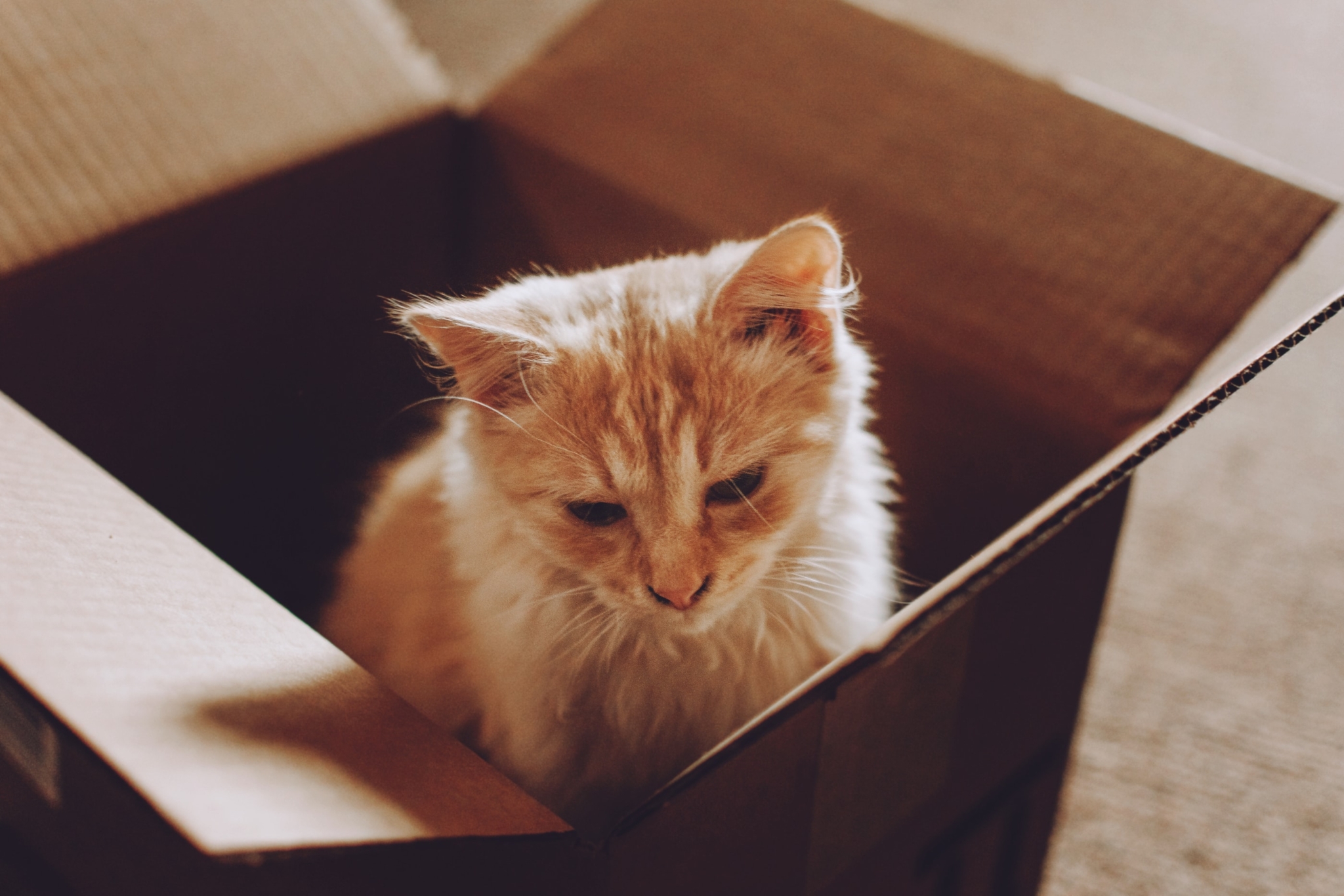Relocating and moving can be stressful, whether moving to a new town or another state. However, moving with pets requires you to control and negotiate your stress while also assisting your treasured pet in dealing with their stress.
Pets can detect human stress and are very sensitive to their owner’s moods, so if you are full of nerves, your pet will probably be too. As with anything in life, preparation is essential. The better you prepare for your move, the more equipped you will be to deal with your pets. You may increase your chances of success on moving day by planning ahead of time and considering your pet’s particular needs.
The main objective while traveling with pets is to keep them safe. So, no matter if you have a large aquarium full of fish, a small reptile, an elderly cat, or a dog, here are Summit Way Realty’s recommendations to help keep your pet and you as stress-free as possible.
Planning a Move With Pets
When you relocate, you do not want any surprises. Make sure you have a detailed plan for your move ahead of time, including everything from transportation, for you and your pet, moving trucks, utilities, veterinarian care, and anything else you can think of. Because you’ll be packing and preparing, you may forget to put a thorough plan together with the necessities for moving your pet. The sooner you make your plan, the better.
Here are a few tips to get you started on moving long distances with pets.

Decide How Will You Be Traveling to Your New House
It is crucial to plan the travel route and mode of transportation to your destination, especially if you are traveling to a new state. First, you must decide whether you will be driving or flying. However, before you decide, think about the health of your pets and the least stressful way of moving with pets.
If you decide you are going to fly with your pet, be sure to check the airline’s pet policy for any additional information. If the trip is shorter than four hours, you may want to drive, as driving will most definitely be less stressful for moving with pets.
If the distance to drive is more than four hours, and you have a pet with medical issues, driving is still the better option. However, when traveling long distances with pets, make essential plans for potty-breaks and lodging that is pet-friendly.
If you’re relocating nearby, think about whether you will need to hire a moving company or do it yourself by renting a U-Haul and a few friends. When you’ve decided on a moving company, make sure to tell them you have a pet. Although the moving company will not be moving your pet, you must keep your treasured companions in mind.

Examine State and Local Rules
If your new home is in a new zip code in your current state or a completely different state, it is important to research state and local laws. Almost every state has regulations covering what types of pets they allow, such as different dog breeds, cats, exotic birds, and other pets like reptiles, so be sure your pets are legal in the state you are moving to.
If you are transporting pets across state lines, you may go through a state border inspection. Ensure you have all of the necessary health certificates and vaccination documents.
Select a Mode of Transportation
It is critical to keep your pet safe during your relocation. So, regardless of the type of pet, you should think about purchasing a travel crate. It will be much simpler to transport animals such as birds, reptiles, and fish if you remove them from their tank or cage and place them in a safe pet carrier.
Introduce your pet to a travel crate as soon as possible so they can become accustomed to being in a new environment. If you’re flying, ensure you are following the airline’s regulations. Also, make sure your pet’s crate is secure with a seat belt or pet harness if you’re driving.
Allowing your pet to wander freely in your car is not a good way to keep them safe and secure when driving. It is dangerous to both you and your pets. Keep your pets in their transport crates at all times.
Schedule an Appointment With Your Veterinarian
Once you’ve settled on a relocation strategy, be sure that it includes a visit to your present veterinarian. Make sure your pet has all of its immunizations and boosters, and, during your visit, consider asking your veterinarian if you may give your pet medicine to calm them on the day you move and during your travel time. Your veterinarian can also go over any red flags or unusual behaviors to watch for while your beloved pet adjusts to their new surroundings.

Examine the Personal ID Tags on Your Pets
Check that the information on your pet’s ID tags is correct. If you have an indoor cat that does not usually wear an ID tag, have one made specifically for your move in the event your pet becomes scared and gets loose. Your pet’s ID tag should include the name of your pet, your full name, your phone number, and your new home address. Customized collars and leashes are the way to go, and Dog ID Collar carries high-quality, comfortable pet accessories.
Pack with Caution When Moving with Pets
When you begin to bring home boxes to pack your belongings, your pets, particularly dogs, cats, and birds, will know something is happening. Set up particular packing areas in your home to reduce stress for your pets. Keep some rooms or areas free of boxes.
Also, if you are using cleaning supplies or things that could be harmful to your pets, don’t leave boxes open or in areas where your pet could access them.
Make a Travel Kit for Your Pet
Create a pet travel pack for your pet, and be sure to include your pet’s health records. Below are a few things to consider:
- The pet’s regular diet
- Portable or foldable food and water dishes
- Blanket or a towel
- Favorite toy
- Treats
- Extra paper towels are available.
- Potty bags made of plastic
- Veterinarian prescribed medication
- Leash
- Two water bottles
- Spray bottle for pets that need moisture

Moving day will arrive before you know it, whether you prepare or not. Ideally, you have taken care of everything that has to be transferred, including your beloved pet.
For those who have dogs, here are some day-of relocation ideas:
- Assign someone to look after your pet. Appoint someone to take after your pet’s needs for the whole day, whether it’s you, a friend, or a pet sitter you’ve hired. This individual is responsible for keeping the pet safe and secure and assisting with any requirements such as feeding or walking.
- Reduce your pet’s food consumption by one-third the day before and the day of the transfer to assist in settling their tummy, whether you’re going by vehicle or by plane.
- If your veterinarian has recommended calming medication, give it to your pet at least 30 minutes before the movers arrive.
- Find a quiet spot away from the racket of movers, boxes, and hard lifting to keep your pet with his kennel and toys.
- Remind movers and anybody else helping you that you have a pet. Inform them of your pet’s whereabouts so that they can be extra cautious if they need to go near the area.
- Make sure your pet’s travel kit is comprehensive.
- Check that your pets are wearing identification tags.
- From the outside, secure your pet’s crate or cage. Check that your dog cannot easily open the crate door and that your boa constrictor cannot easily remove the cover from its carrier.
- Keep an eye on the weather outside, especially if you have pets susceptible to excessive heat or cold.
Adjusting to Your New Home
When you first move to your new home, don’t allow your pet to run about freely. Instead, create a safe space for your pet in a separate room so they may become adjusted while you are moving in. Wait until all of the movers have left before gradually introducing your pet to other areas of the house.
Moving is exhausting, whether you’re a human or a pet. Allow some time for both you and your pet to acclimatize to your new surroundings. The more comfortable you are in your new surroundings, the more comfortable your pet will be. When settling in, set aside a place for your treasured pet to make their own in your new home to aid them in settling in. The more similar a room is to its old one, the simpler it will be for your pet to adjust. Furthermore, animals, particularly dogs, and cats, often take comfort in the fragrance of your old house, so refrain from washing your dog’s favorite blanket.

During this transition period, keep a close eye on your pet as they acclimatize to their new environment. It’s crucial to have a veterinarian for all your pet’s healthcare needs. Be sure to find a new veterinarian as soon as you settle in. Contact your new veterinarian straight away if you see any strange behavior or anything that gives you worry.
In Conclusion
Moving and relocating can be a stressful time, and with the planning, packing, and settling into the new home, it is important to have all of your ducks in a row. Moving with pets is difficult, but it is definitely worth the effort. After all, they are family. Transportation, scheduling an appointment with the veterinarian, ID tags, making a travel kit, and settling into your new home, are all critical parts to a successful move with your pet.
If you need more moving tips or real estate advice, Summit Way Realty is the company to call. We are one of Kansas City’s best real estate agencies, and our agents are here for you every step of the real estate journey.







